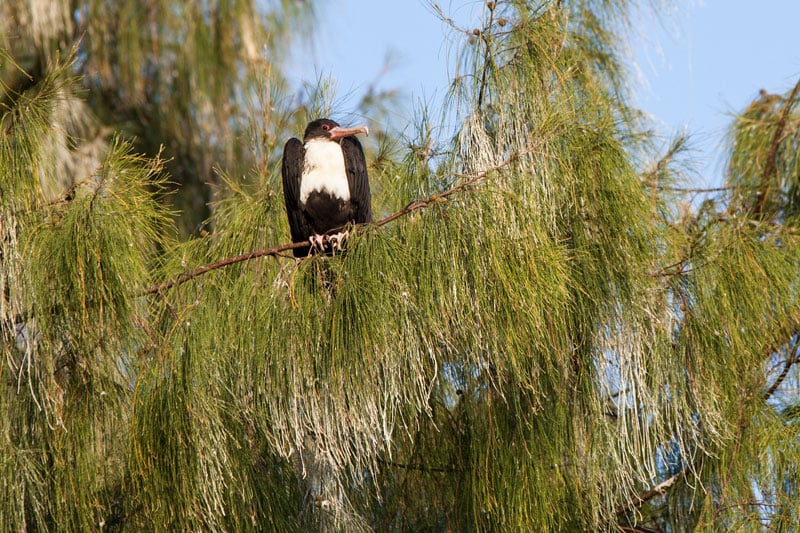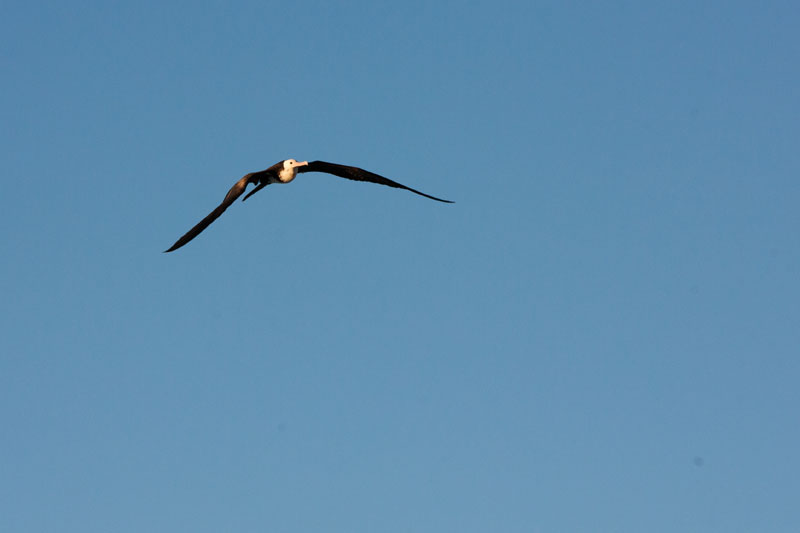Flight of the Frigatebird
How high can a frigatebird fly? Seeing a frigatebird from a plane window raised the question for D’Arros based Clare Daly. A recent study provides an answer.
The small plane that carried me back to D’Arros after a month away shuddered and pitched as we descended through a cloud, awaking me from the shallow nap I’d drifted into on the flight from Mahé. Before spotting the verdant biscuit of D’Arros or its shimmering sister St Joseph Atoll, the sight of a lone frigatebird caught my attention. Way up here? I wondered, How high can a frigatebird fly?
Of course, I’d just read a press release covering a fantastic study of great frigatebirds (Fregata minor). The study took on Europa Island in the Mozambique Channel and thoroughly answered this question. Yet in my great excitement over the discoveries made in that study (and the extensive press coverage of it), I couldn’t recall the actual height.

A frigatebird soaks in some early morning sunlight on the branch of a casuarina tree on St Joseph Atoll. Photo by Ryan Daly | © Save Our Seas Foundation
On D’Arros, and even more so on St Joseph Atoll, the ubiquitous frigatebird recruits even the most oblivious visitor into the realm of birder. Most noteworthy are their aerial pursuits, which provide evening entertainment as well as fodder for blogs and potential future studies. For example, this very blog which answers the question of how high a frigatebird can fly.
How High?
The answer: 4000 metres or roughly 13,000 feet. Which, for comparison sake, is approximately half the height of Mount Everest. Or using the more conventional unit of international measurement, about twelve and a half Eiffel Towers. However, reaching this altitude is dependent on the strong updrafts found in cumulus clouds. Frigatebirds reach these heights, and the more frequent-recorded heights of 700m/2300ft/two Eiffel Towers, with very little energy expenditure. This is a result of the frigatebird’s remarkable wing-area to body-weight ratio, the lowest wing-loading ratio of any bird species.

The lowest wing loading ratio of any bird species allows the frigatebird to soar to great heights. Photo by Ryan Daly | © Save Our Seas Foundation
Never mind the temperature extremes at those altitudes, this is an extraordinary discovery. And although this study answered my question for now, I have a feeling we’re only scratching the surface of what both frigatebirds and the technology used in this study have to offer.
